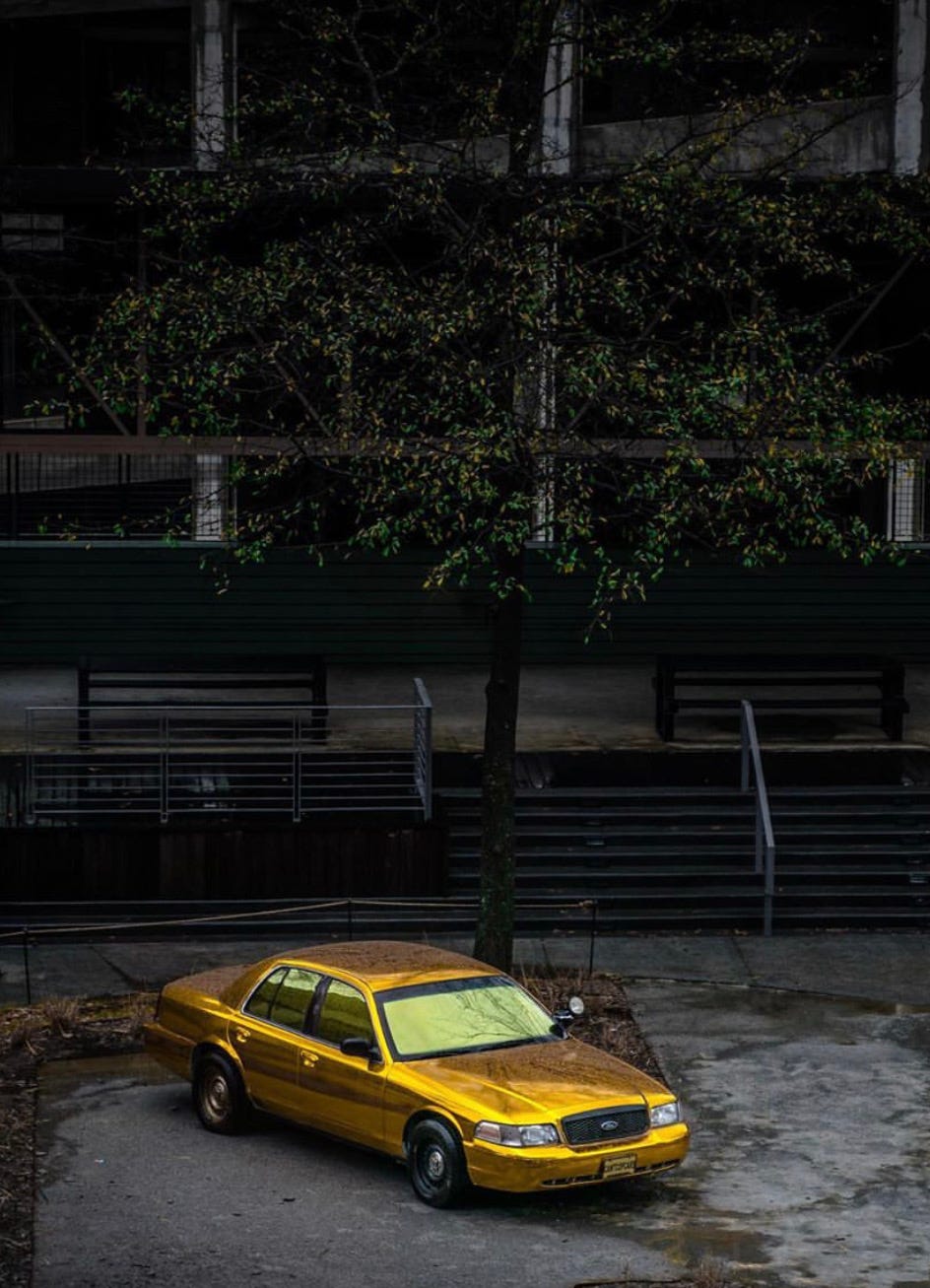We Can’t Cop Cars Without Seeing Cop Cars
Blackness is often visible—but rarely seen. There is a difference. While popular media routinely obsesses over hyper-visibility and pathology, the deeper violence lies in omission. In erasure. In what I call unvisibility— the state of being unseen, the willful denial of existence. Unvisible doesn’t mean “can’t see.” It means “won’t see.”
In 2020, at the height of global reckonings around race and representation, I created We Can’t Cop Cars Without Seeing Cop Cars—a short film and site-specific installation presented on the Atlanta Beltline. At the core of this project is a question: Where can Black men be? Where can we breathe, rest, move, and imagine—unencumbered by fear or surveillance?

Set inside a tricked-out, metallic gold Ford Crown Victoria Interceptor—once a ubiquitous symbol of law enforcement, now a reclaimed icon in Black urban life—the installation invites viewers into a space that is as intimate as it is political. The short film plays inside the vehicle on a mounted monitor. But to see it, you must sit in the backseat. The same seat that too often marks us as suspects.
This deliberate positioning forces reflection—on context, history, and embodiment. But within this liminal space, the film reveals an emotional topography that includes not just fear, but also joy, imagination, and flight. We Can’t Cop… isn’t a spectacle. It’s an exhale. A meditation. A momentary liberation.
Trapademia™: Resistance as Revelation
This work is part of a larger practice I call Trapademia™—a term that blends “trap,” referencing both the Southern-born hip-hop subgenre and the systems that constrain us, with “academia,” signaling critical thought and inquiry. Trapademia™ reframes trap culture as a technology, a system of tools, behaviors, and knowledge produced by and for marginalized people.
Too often, the trap is flattened to a singular narrative of criminality and crisis. But Trapademia™ recognizes the resourcefulness and innovation that emerge from the margins. It views the trap as generative… as a praxis—creative, complex, and resourceful. This isn’t about romanticizing trauma. It’s about revealing brilliance.
Reclaiming the Crown
There is a strange poetry in the Crown Vic—once a tool of policing, now a prized possession in many Black communities. What does it mean to cop cars that were once cop cars? In We Can’t Cop Cars…, the Crown Vic becomes altar and archive. A golden shrine to memory, movement, and possibility.
Viewers encounter the vehicle in public space—gleaming, impossible to ignore. They step inside. The doors close. And for four minutes, they are immersed in the psychogeography of Black male interiority. Movement becomes meditation. Dance becomes language. Sound becomes pulse. To sit in the backseat is to bear witness. To enter the Crown Vic is to reimagine what it means to be free, to move, to be whole.
Watch the film. See us. Really see us.
CREDITS
Written and Directed by: Dr. Fahamu Pecou
Dancer: De’shi Davis (@_virtuouschild)
Choreographer: Raianna C. Brown (@raiannacbrown)
Director of Photography: DeVaughn Hughson (@devaughn)
Music: Corey “Illastrate” Presley (@illastrate_)
Editor: Kristian Melom (@kristianmelom)
Produced by: Dr. Fahamu Pecou and Karen Marie Mason (@karenmariemason)
Drone Operator: Michael Moss (@skylanefilms)
Grip: Jason Staten (@jasonstaten)
Driver: PNut Madison (@pnut_offo)
Presented by: Atlanta Beltline Arts (@atlantabeltlineart)
#shotoniphone #shotoniphone11promax



